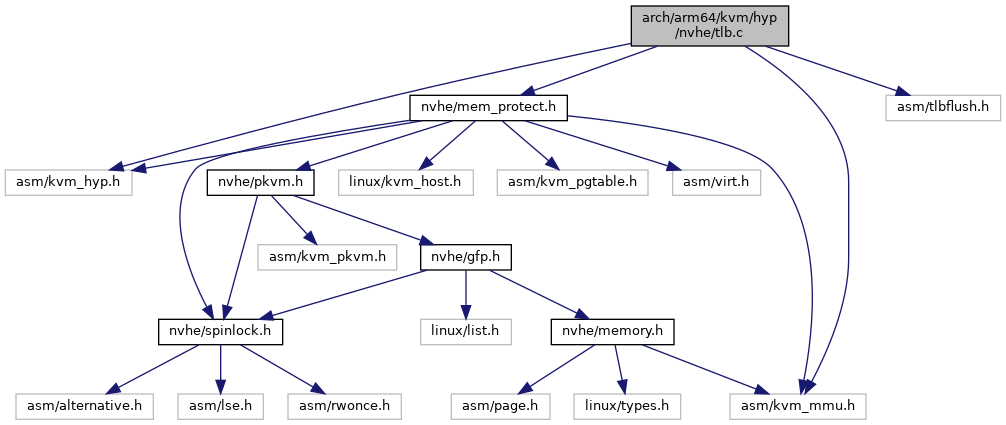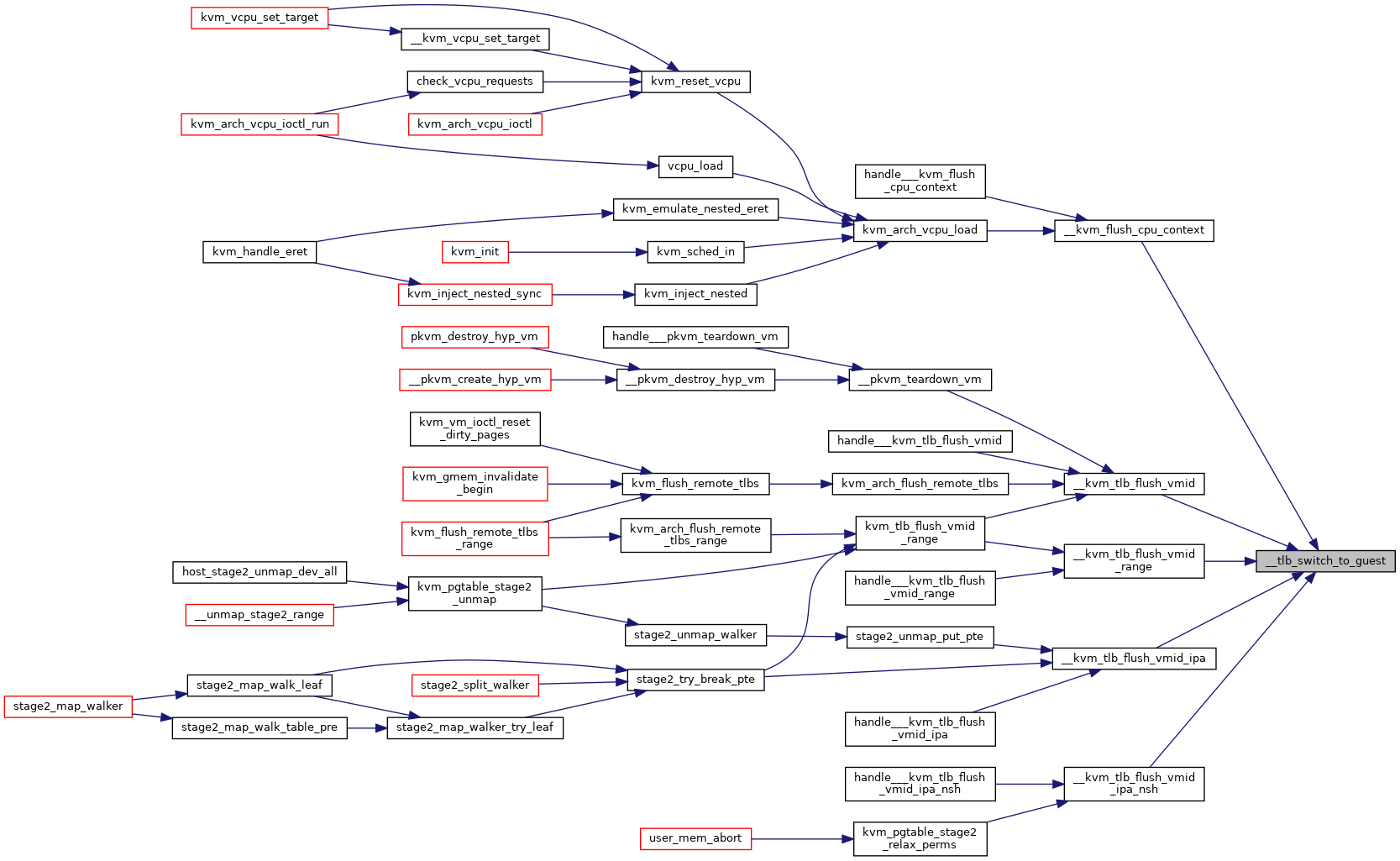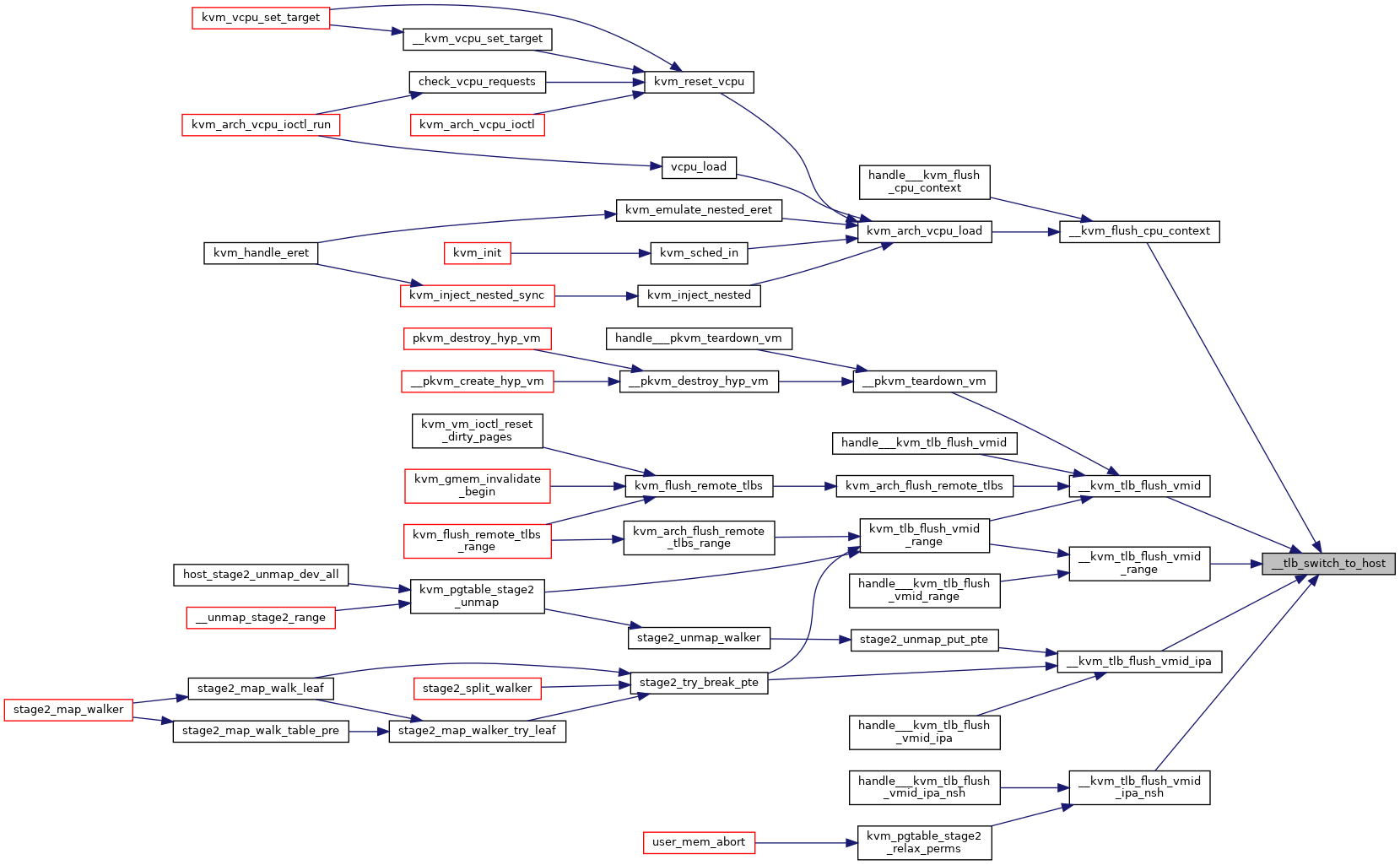#include <asm/kvm_hyp.h>
#include <asm/kvm_mmu.h>
#include <asm/tlbflush.h>
#include <nvhe/mem_protect.h>
Go to the source code of this file.
◆ __kvm_flush_cpu_context()
| void __kvm_flush_cpu_context |
( |
struct kvm_s2_mmu * |
mmu | ) |
|
Definition at line 182 of file tlb.c.
190 asm volatile(
"ic iallu");
static void __tlb_switch_to_guest(struct kvm_s2_mmu *mmu, struct tlb_inv_context *cxt, bool nsh)
static void __tlb_switch_to_host(struct tlb_inv_context *cxt)
◆ __kvm_flush_vm_context()
| void __kvm_flush_vm_context |
( |
void |
| ) |
|
◆ __kvm_tlb_flush_vmid()
| void __kvm_tlb_flush_vmid |
( |
struct kvm_s2_mmu * |
mmu | ) |
|
Definition at line 168 of file tlb.c.
175 __tlbi(vmalls12e1is);
◆ __kvm_tlb_flush_vmid_ipa()
| void __kvm_tlb_flush_vmid_ipa |
( |
struct kvm_s2_mmu * |
mmu, |
|
|
phys_addr_t |
ipa, |
|
|
int |
level |
|
) |
| |
Definition at line 81 of file tlb.c.
95 __tlbi_level(ipas2e1is, ipa, level);
◆ __kvm_tlb_flush_vmid_ipa_nsh()
| void __kvm_tlb_flush_vmid_ipa_nsh |
( |
struct kvm_s2_mmu * |
mmu, |
|
|
phys_addr_t |
ipa, |
|
|
int |
level |
|
) |
| |
Definition at line 111 of file tlb.c.
125 __tlbi_level(ipas2e1, ipa, level);
◆ __kvm_tlb_flush_vmid_range()
| void __kvm_tlb_flush_vmid_range |
( |
struct kvm_s2_mmu * |
mmu, |
|
|
phys_addr_t |
start, |
|
|
unsigned long |
pages |
|
) |
| |
Definition at line 141 of file tlb.c.
145 unsigned long stride;
152 start = round_down(start, stride);
157 __flush_s2_tlb_range_op(ipas2e1is, start, pages, stride,
◆ __tlb_switch_to_guest()
| static void __tlb_switch_to_guest |
( |
struct kvm_s2_mmu * |
mmu, |
|
|
struct tlb_inv_context * |
cxt, |
|
|
bool |
nsh |
|
) |
| |
|
static |
Definition at line 17 of file tlb.c.
43 if (cpus_have_final_cap(ARM64_WORKAROUND_SPECULATIVE_AT)) {
53 val = cxt->
tcr = read_sysreg_el1(SYS_TCR);
54 val |= TCR_EPD1_MASK | TCR_EPD0_MASK;
55 write_sysreg_el1(val, SYS_TCR);
65 __load_stage2(mmu, kern_hyp_va(mmu->arch));
66 asm(ALTERNATIVE(
"isb",
"nop", ARM64_WORKAROUND_SPECULATIVE_AT));
◆ __tlb_switch_to_host()
Definition at line 69 of file tlb.c.
73 if (cpus_have_final_cap(ARM64_WORKAROUND_SPECULATIVE_AT)) {
77 write_sysreg_el1(cxt->
tcr, SYS_TCR);
static __always_inline void __load_host_stage2(void)














